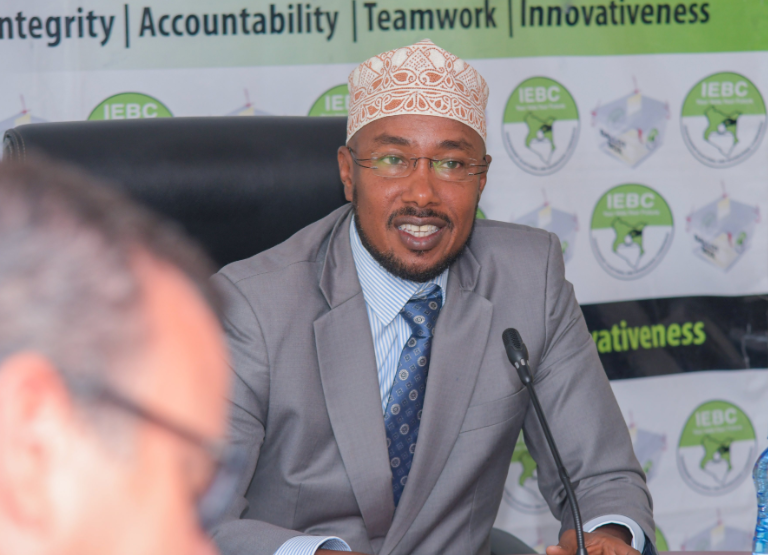Coalition of scientists creates new energy source for planet

A coalition of scientists across the globe have created the viability of fusion, the power of the sun and stars, as an abundant, safe, carbon-free energy source for the planet.
Defying ideological, economic and geopolitical barriers, scientists from China, Europe, India, Japan, Korea, Russia and the USA made a landmark achievement called ITER (International Thermonuclear Experimental Reactor), completing all components for the world’s largest, most powerful pulsed superconducting electromagnet system.
Thousands of scientists and engineers have contributed components from hundreds of factories on three continents to build a single machine. The final component was the sixth module of the Central Solenoid, built and tested in the United States.
When it is assembled at the ITER site in Southern France, the Central Solenoid will be the system’s most powerful magnet, strong enough to lift an aircraft carrier.
The remarkable feat by ITER (an international collaboration of more than 30 countries), demonstrates that when humanity faces existential challenges like climate change and energy security, we can overcome national differences to advance solutions.
The Central Solenoid will work in tandem with six ring-shaped Poloidal Field magnets, built and delivered by China, Europe and Russia. The fully assembled magnet system will weigh nearly 3,000 tonnes. It will function as the electromagnetic heart of ITER’s doughnut-shaped reactor, called a Tokamak.
Five steps
How does this pulsed superconducting electromagnet system work?
The first step is when a few grammes of hydrogen fuel – deuterium and tritium gas – are injected into ITER’s gigantic Tokamak chamber. Then the pulse magnet system sends an electric current to ionise the hydrogen gas, creating a plasma, a cloud of charged particles.
Third, the magnets create an “invisible cage” that confines and shapes the ionised plasma before the external heating systems raise the plasma temperature to 150 million degrees Celsius, ten times hotter than the core of the sun.
At this temperature, the atomic nuclei of plasma particles combine and fuse, releasing massive heat energy.
At full operation, ITER is expected to produce 500 megawatts of fusion power from only 50 megawatts of input heating power, a tenfold energy gain. At this level of efficiency, the fusion reaction largely self-heats, becoming a “burning plasma”.
By integrating all the systems needed for fusion at industrial scale, ITER is serving as a massive, complex research laboratory for its 30-plus member countries, providing the knowledge and data needed to optimise commercial fusion power,
ITER’s geopolitical achievement is remarkable in the sustained collaboration of ITER’s seven members.
“What makes ITER unique is not only its technical complexity but the framework of international cooperation that has sustained it through changing political landscapes,” says ITER Director-General Peter Barabaschi, terming the project the embodiment of hope.
“With ITER, we show that a sustainable energy future and a peaceful path forward are possible”.
Last year, ITER reached 100 per cent of its construction targets. With most major components delivered, the ITER Tokamak is now in assembly phase. This month, the first vacuum vessel sector module was inserted into the Tokamak Pit, three weeks ahead of schedule.
The past five years have witnessed a surge in private sector investment in fusion energy. In November 2023, the ITER Council recognised the value and opportunity represented by this trend.
They encouraged the ITER organisation and its domestic agencies to actively engage with the private sector, to transfer ITER’s accumulated knowledge to accelerate progress toward making fusion a reality
In 2024, ITER launched a private sector fusion engagement project, with multiple channels for sharing knowledge, documentation, data and expertise, as well as collaboration on research and development.
This tech transfer initiative includes sharing information on ITER’s global fusion supply chain, another way to return value to member governments and their companies.
ITER hosted a public-private workshop this year, to collaborate on the best technological innovation to solve fusion’s remaining challenges.
How have ITER’s members contributed to this achievement?
Coming together
Under the ITER Agreement, members contribute most of the cost of building ITER in the form of building and supplying components. This arrangement means the financing from each member goes primarily to their own companies, to manufacture ITER’s challenging technology. In doing so, these companies also drive innovation and gain expertise, creating a global fusion supply chain.
Europe, which is the host member, contributes 45 per cent of the cost of the ITER Tokamak and its support systems. China, India, Japan, Korea, Russia and the United States each contributes 9 per cent, but all members get access to 100 per cent of the intellectual property.
The US has built the Central Solenoid, made of six nodules, plus a spare. The US has also delivered to ITER the “exoskeleton” support structure that will enable the Central Solenoid to withstand the extreme forces it will generate.
The exoskeleton is comprised of more than 9,000 individual parts, manufactured by eight US suppliers. Additionally, the US has fabricated about 8 per cent of the Niobium-Tin (Nb3Sn) superconductors used in ITER’s Toroidal Field magnets.
Russia has delivered the 9-metre diameter ring-shaped Poloidal Filed magnet that will crown the top of the ITER Tokamak. Working closely with Europe, Russia has also produced approximately 120 tonnes of Niobium-Titanium (NbTi) superconductors, comprising about 40 per cent of the total required for ITER’s Poloidal Field magnets. Russia has also produced about 20 per cent of the NbTi superconductors for ITER’s Toroidal Field magnets.
Russia has also manufactured the giant busbars that will deliver power to the magnets at the required voltage and amperage, as well as the upper port plugs for ITER’s vacuum vessel sectors.
Europe has manufactured four of the ring-shaped Poloidal field magnets onsite in France, ranging from 17 to 24 metres in diameter. And Europe is creating five of the nine sectors of the Tokamak vacuum vessel, the doughnut-shaped chamber where fusion will take place,
China, under an agreement with Europe, has manufactured a 10-metre Poloidal Field magnet. It has already been installed at the bottom of the partially assembled ITER Tokamak. China has delivered the 31 magnet feeders, the multi-lane throughways that will deliver the electricity to power ITER’s electromagnets as well as the liquid helium to cool the magnets to 269 degrees Celsius, the temperature needed for superconductivity.
Japan has produced and sent to the US the 43km of Niobium-Tin (Nb3Sn) superconductor stand that was used to create the Central Solenoid modules. Japan has also produced 25 per cent of the Nb3Sn superconductors that went onto the Toroidal Field magnets.
Korea has produced the tolling used to pre-assemble ITER’s largest components, enabling ITER to fit the Toroidal Field coils and thermal shields to the vacuum vessel sectors with millimetric precision. Also, they have delivered four of the nine sectors of the Tokamak vacuum vessel.
India has fabricated the ITER Cryostat, the 30-metre high, 30-metre diameter thermos that houses the entire ITER Tokamak. India has also provided the cryolines that distribute the liquid helium to cool ITER’s magnets.
India will deliver ITER’s cooling water system, the in-wall shielding of the Tokamak, and the multiple parts of the external plasma heating systems.
In total, ITER’s magnet systems will comprise 1,000 tonnes of superconducting magnets, with a combined stored magnetic energy of 51 Gigajoules. The raw material to fabricate these magnets consisted of more than 100,000 kilometres of superconducting strand, fabricated in 9 factories across six countries.














